- You are here:
- Home »
- Blog
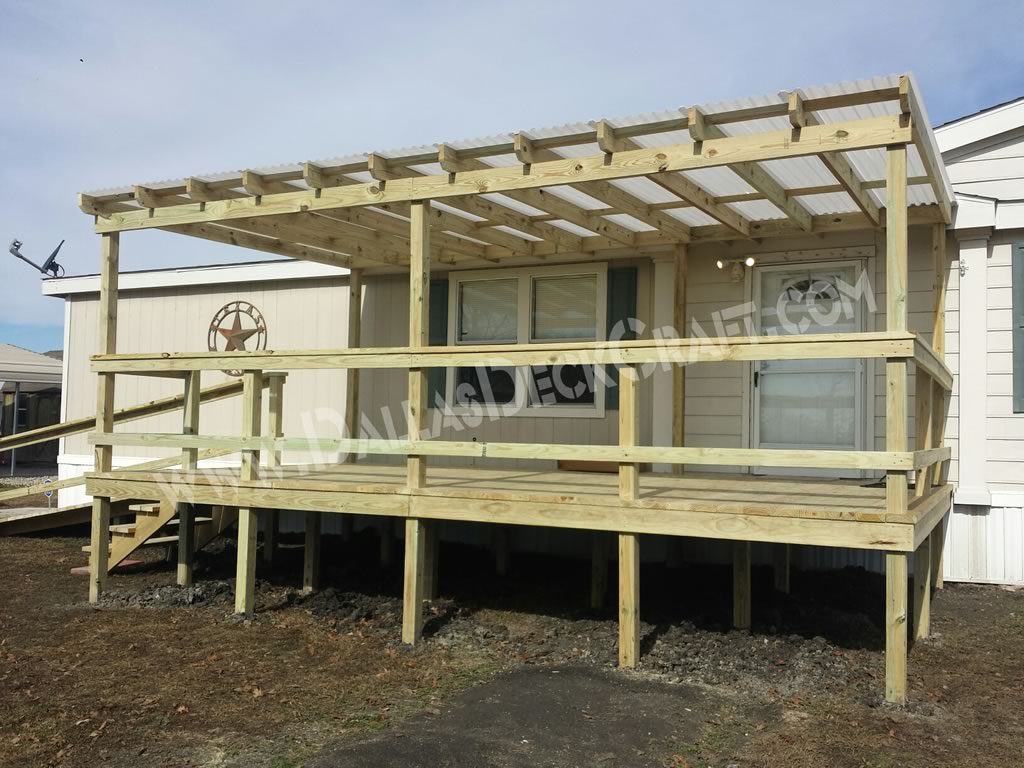
Mobile Home Porches: Top 5 Manufactured Home Deck Designs
Mobile home porches can be designed in a virtually limitless number of ways. But when you boil it down, there are basically 5 different types of mobile home porches and deck designs. You have the traditional porch, a screened in porch, a simple rectangular deck, a deck or porch that wraps around your manufactured home and an above ground pool deck. Let’s take a closer look at the top 5 mobile home porches and deck designs.
The Traditional Porch
Most dictionaries will tell you that a porch is – a covered shelter projecting in front of the entrance of a home or building. That is why, among all of the types of mobile home porches you can build, the standard porch is a solid go-to option. Just by adding a covered porch, small or large, to the entrance of your manufactured home, you immediately improve its value and “livability factor.”
Screened In Mobile Home Porch
Mobile home porches are often screened in, especially in the Southern US states. In Texas, high humidity and long, hot summers often bring lots of mosquitoes and other flying, crawling pests. A screened in porch lets you enjoy the outdoor weather, while protecting you from Mother Nature at the same time.
Traditional Rectangular Deck
A “standard deck” is a flat square or rectangle. Common sizes include 12×16 feet and 10×12 feet, but any straightforward rectangular or square shape and size can make up a traditional, no-frills deck. These can include handrails and/or a covering.
Wrapped Deck or Porch
Here is where mobile home porches start to get interesting and versatile. Take a standard porch, screened in porch or deck. Now envision it wrapping around a portion of your manufactured home, possibly surrounding it totally. These are very popular, and when dealing with a mobile home deck wrap, they will or will not include a covering, handrails and other amenities.
The Above Ground Pool Deck
Manufactured homes are attractive as an alternative to a traditional home purchase because of the smaller financial investment. The same is true with an above ground pool versus in-ground. Mobile home porches can extend to a backyard above ground pool, moving from your manufactured home out to and around the pool. This delivers multiple options for outdoor living experiences, more than your pool provides without a deck.
Mobile Home Porches Come in All Shapes and Sizes
They truly are limited only by your imagination. Different decking types can be used, and you can add screen to boost functionality. A professional deck builder can provide you with the answers to all your questions concerning mobile home porches, decks and pool wraps, and your cost just might pleasantly surprise you.
Decks consistently return, dollar for dollar, one of the best home addition values of any home improvement plan. When you call Dallas Deck Craft today, we will schedule a time at your convenience to meet with you and provide a no obligation quote based on our 35 years of experience in the Dallas, Collin and Rockwall County areas. You have nothing to lose and a lifetime of wonderful memories to gain when you call for your free mobile home porch or deck estimate. Ring us up right now so we can provide you with a free quote as soon as possible.
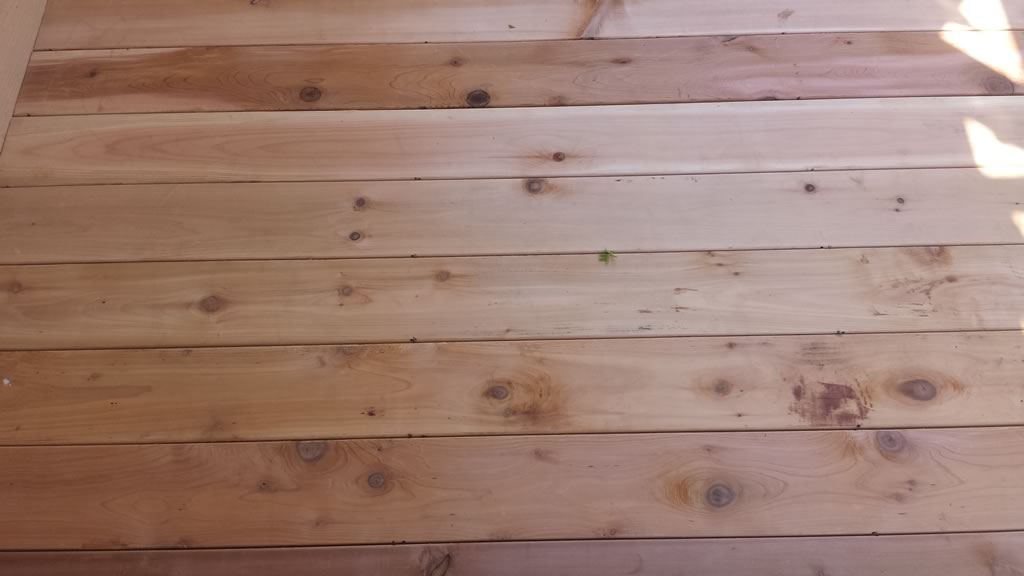
Why Choose Cedar Decking For Your Outdoor Living Experience?
Why Choose Cedar Decking For Your Outdoor Living Experience?
Are you considering Cedar decking for your backyard outdoor living project? We are here to help you at DallasDeckCraft.com. You know you could save some money and go the pressure treated route. Or you could head in the opposite direction, and buy the more expensive composite deck or tropical hardwood deck like red balau or ipe that last a lifetime. So, given all the choices, why do so many homeowners choose cedar decking over pressure treated and other types of woods and plastics? Let’s take a look.
Cedar Decking Benefit #1
Just looking at a cedar deck reveals what many homeowners feel is this decking material’s biggest benefit-appearance. Cedar is absolutely gorgeous. And it gets that way naturally, not requiring any painting or staining to improve on its visual appeal. It is hard to find a better looking decking material.
Cedar Decking Benefit #2
Whether you build your own deck or hire a seasoned professional to deliver a quality product, you want your outdoor living experience to last. Cedar decking is naturally resistant to long-term ultraviolet exposure from the sun. This wood is also highly resistant to rot, mildew and mold. Cedar also resists bug and insect infestations. This means a hands-off, headache-free enjoyment of your cedar deck.
Cedar Decking Benefit #3
This type of decking material requires very little maintenance. Because it is so durable and naturally beautiful, you will not spend your time staining, painting or repairing your deck. You will instead spend your time enjoying it.
Cedar Decking Benefit #4
Although durable and long-lasting, cedar decking is rather lightweight compared to some other deck woods and plastics. This means it is easier to work with, which translates to a lower labor cost.
Cedar Decking Benefit #5
You would think because cedar is so lightweight that it may be porous. The opposite is actually true. Cedar decking will not absorb much moisture, even if you decide to leave it untreated. This means less cost over time, since you do not have to apply waterproof stains although if you want to maintain its natural color and look you may want to apply an ultraviolet ray blocker.
Cedar Decking Benefit #6
Beautiful and long-lasting cedar costs more money up front than some alternate plastic, composite and wood decking materials. But since it is such a low-maintenance and long-lasting material, you save money over time by less maintenance, repair and replacing parts of your deck.
Cedar Decking Benefit #7
Smart deck builders love working with cedar. How is this a benefit for you? Because this rugged and beautiful wood is so easy to handle and work with, it often means less time involved finishing your outdoor living experience. And because it is lighter in weight than many other types of decking, it does not create the physical strain that other woods and composites do. All this means that your decking contractor can give you a very attractive price tag for your cedar decking project.
If you would like to learn more about why cedar decking is so beneficial, and perfect for the Dallas, Rockwall and Collin county areas, give us a call today. You receive the benefit of our 35 years of deck building experience, and we provide you with a quote. But don’t hesitate so we can get started delivering the benefits of cedar decking to you and your family sooner than later.
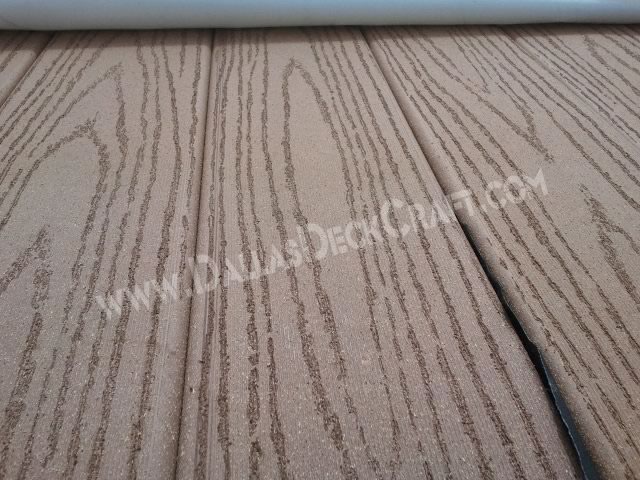
Building with Composite Decking: Is it a Smart Choice?
Composite Decking
As part of the building industry’s constant quest to make things better, more convenient and easier, composite decking was developed. There used to be just one option for decking—wood—but now there are a few choices available to suit any homeowner’s budget and preferences.
Wood decking needs regular maintenance and care, such as annual staining or refinishing, and this can be tedious for some people. Although there are kinds of wood decking materials such as ipe and other tropical hardwoods that require less maintenance, owning a wooden deck entails responsibilities.
Recognizing that a lot of homeowners might appreciate options that require less maintenance, some entrepreneurs came up with alternatives using materials such as aluminum, vinyl, and plastic. But the most popular option in the decking industry that has seen a lot of demand in the last decade is composite wood decking.
Also known as synthetic decking, wood-polymer composites and cheap composite decking, composite is quickly becoming the top decking material choice for many homeowners and builders.
Here are the reasons why:
- It is environmentally friendly
- Lightweight
- Stain resistant
- Insect/borer resistant
- Weather resistant
- Will not rot or splinter
- Very low maintenance
- Good workability and can be easily shaped
- Does not need paint or stain
What in the World is Composite Decking?
Wood composite decking is a man-made material made from combined materials such as wood and plastic. First introduced into the decking market in the early ’90s, these materials are processed to emulate the appearance of wood. The wood component of this combination typically consists of lumber byproducts such as wood fiber, sawdust and chips.
The plastic components are often made from both recycled and virgin thermoplastic materials that include ABS (Acrylonitrile Butadiene Styrene), PVC (Poly Vinyl Chloride) and PP (Polypropylene). During production, these components are added with preservatives and pigmentation, and then heated in high temperatures to thoroughly melt.
How do They Make it?
There are two major production methods that also affect the strength and quality of the composite decking.
The first process is called extrusion, wherein the raw materials are mixed and melted and then forced through an opening that has the shape and size of a decking board. This process solidifies the mixture into a finished product that has a consistent shape and size.
The other process is called compression molding, wherein the molten materials are combined and placed on a wood grain mold. The materials in the mold will then be compressed under extreme pressure and heat to create a strong physical bond. They are then formed into lengths simulating wooden boards while they are being cooled.
The finished product can have a beautiful, wood-like look, and they often come in a wide variety of grain patterns, colors and composite deck prices. This type of artificial wood decking can give a homeowner the freedom to build a deck without the maintenance, as composite decks don’t have to be sanded, painted or stained.
To Cap or Not to Cap
There are actually two types of composite or synthetic decking: capped composite and uncapped composite.
Uncapped
This is the first generation type of composite decking and is less expensive than the capped type. It never needs to be refinished or stained, nor does it splinter or twist. It is, however, more prone to stains and fading, so it has to be periodically cleaned to maintain its beauty. It is highly recommended that the surface be swept clean, soaped, scrubbed and hosed down every six months.
Capped
This is the next generation composite decking. It has a plastic surface that serves as protection of the wood fibers from being exposed to the elements. It also prevents the boards from fading and staining. Capped composite decking is not porous, which means that liquids will bead on the surface and will not easily dry so the surface tends to be slippery when wet.
How to Choose the Best Composite Decking
There are a few important factors that should be considered when choosing the best composite deck for your home. These include composite deck prices, color availability and type of fastener system used. You can also narrow down your search for the best product when you determine your desired deck texture, deck location and how you intend to use the deck.
There are a few big names in the composite decking market, such as Trex composite decking, Evergrain, Veranda Decking, CorrectDeck and TimberTech. The composite market is constantly evolving as manufacturers continue to develop their products to provide homeowners and builders with the best combination that will eliminate stain, mold and fading issues from wood composite decking.
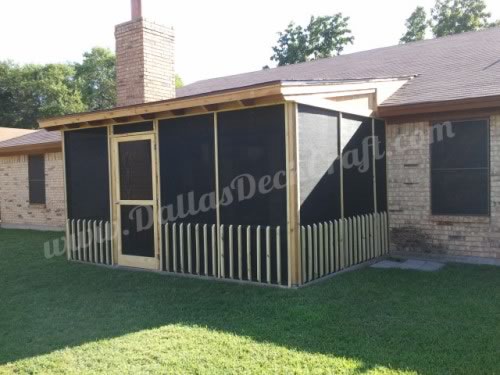
The Advantages of Screened in Porch over a Traditional Deck
Dallas, Texas Screened In Porch
Thinking about building a deck in Dallas, Texas, but also considering a screened in porch as a complement to your current patio? Decks and other outdoor living areas provide, dollar for dollar, an outstanding return on investment. The cost of your home usually appreciates by the cost of your outdoor edition, and the good times and memories you create are priceless.
The Benefits of a Screened In Porch in Dallas, Texas
But remember that old saying? You know, how everything is bigger in Texas? Well that includes those bird-sized Dallas mosquitoes. And you may have the most beautiful and spacious outdoor deck, porch or patio in the world.
But if you have to retreat inside when darkness falls, or you and your friends are constantly swinging and swatting at mosquitoes and other flying pests while you are trying to have a good time, considering screened porches makes a lot of sense.
If you sat down and made a list of exactly what the perfect outdoor entertainment center would have, it might look something like this:
- A mosquito and bug-free area
- Lighting to keep the good times going after nightfall
- Ceiling fans to cut through the stifling Dallas humidity
- A big-screen TV and music system
- Plenty of room for dining and seating
A Screened In Porch Has Got You Covered
All of these things can be accomplished with the addition of a screened porch. And when you integrate a beautiful and rugged wood like rough cedar into its construction, you create an attractive and durable screened in porch, patio or deck that will keep the bugs out and the wonderful memories going for years.
Also, while outdoor decks in the open air are certainly enjoyable, they cannot provide many of the benefits that screened porches offer. Looking through the short list of desirable outdoor entertainment features we mentioned above proves this.
If you want a television or stereo to accompany you on your deck, you have to take it outside and bring it back in every time you use it. And when night comes, that is often times the end of your outdoor entertainment. The screened porches offer the ability to add ceiling fans to improve your environment, lighting to keep you going long after it gets dark, and a bug-free area for so many activities.
Also, a lot of people don’t know that seasoned deck builders and other craftsmen with years of experience providing you with unforgettable outdoor memories also know a lot about screened porches. Did you know that there are literally dozens of types of screen to choose from? What is the best type for your particular situation?
These are questions best answered by a professional deck builder and screened porch veteran. With several decades of outdoor entertainment center building experience, we would like to help you craft the perfect screened in porch designs for your home.
As Dallas, Texas professional deck builders, we know how much enjoyment and priceless bug-free rewards we have received from our own screened porches. So when you call us today, we will give you an absolutely free estimate that will get you started towards reaping the many benefits that a screened in porch have over a traditional deck.
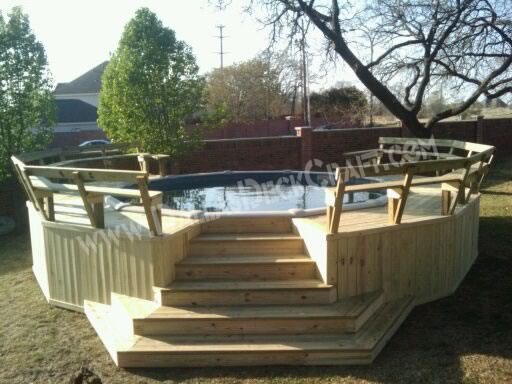
Have An Above Ground Pool Deck Put In To Get The Most Pleasure Out Of Your Above Ground Swimming Pool
Above Ground Pool Deck Ideas
There are a wide range of above ground pool deck ideas, plans, and materials (round, oval, side, rectangular, concrete, wood, stone, rock, etc.).
Above Ground Pools Are Popular
In backyards all across the U.S., above ground swimming pools are popping up. There are approximately four million of these types of pools in America, and almost 200,000 of them are sold annually. It’s really easy to understand why above ground pools are so common: They’re inexpensive, easy, and quick to install, and they require hardly any maintenance.
Above Ground Pool Decks Are Essential
In order to the get the most pleasure and enjoyment out of an above ground pool, however, you need a deck that surrounds it. Say goodbye to the pool ladder, and say hello to a fun-in-the-sun get-together hangout spot for your family and friends. It will give you a nice place to wine, dine, sunbathe, and swim–or just visit.
Decks for Above Ground Pools: How & Why
- An above ground pool is often put in because a raised platform provides easy access to the pool
- Deck contractors can be hired to design, develop, and install an above ground pool deck
- For a low price, you can significantly improve the aesthetics, enjoyment, and look of your pool and backyard as a whole
- There is usually no need for any excavation
Advantages of an Above Ground Pool Deck
- A raised deck will completely negate the need for excavation, leaving your backyard free of shovels, equipment, digging, and damage.
- Makes unwanted pool access a lot more difficult for pets and children.
- An above ground pool deck has sidewalls that will keep debris and leaves from blowing in.
An Above Ground Pool Deck Makes Backyard Parties More Fun
A beautiful and expansive pool deck is the first thing that guests and family will notice about your pool when they come to visit. An above ground pool deck should be big enough to have plenty of space for lounge chairs, benches, container plants, and anything else-decorative or playful-that would normally be placed on a deck.
An above ground pool deck, with the right planning, can make an above ground pool look like an in ground pool. Or, an above ground pool deck can be built such that that the pool will look raised and keep out unwanted visitors.
Above ground pool deck designs are what really give pools their signature looks. There are hundreds of common designs and thousands of custom-built ideas that planners, builders, and developers come up with every day. Indeed, about 200,000 above ground pools are installed in backyards in America each year. Whether you get a wood, composite, or pressure-treated deck, don’t make the decision without consulting deck contractors first. Go over the plans with them, and discuss the advantages and disadvantages of each material. It’s not a decision you should make without sufficient consultation.
An Above Ground Pool Deck is a Work of Art
An above ground pool deck, elevated off the ground, can look striking and impressive to backyard guests and family friends. When it comes time for those summertime parties, you’ll be thankful that you put in an above ground pool deck.
Above ground pools and above ground pool decks have been mass manufactured since the 1950s. Wise consumers who want the permanent look of an in-ground pool with a lower price tag have historically opted for an above ground pool. Spending money on the deck is a better use of funds, and investing a lot of money in a beautiful and well-designed deck can add a whole new dimension to the look of your backyard and your home as a whole.
If you’re not a fan of the above ground look, you can always look into designs that can be sunken–or buried–in the ground. Your house visitors might not even be able to tell it’s actually an above ground pool.
A deck can be any shape, e.g., rectangular, oval, or square, while the pool itself is of a different shape.
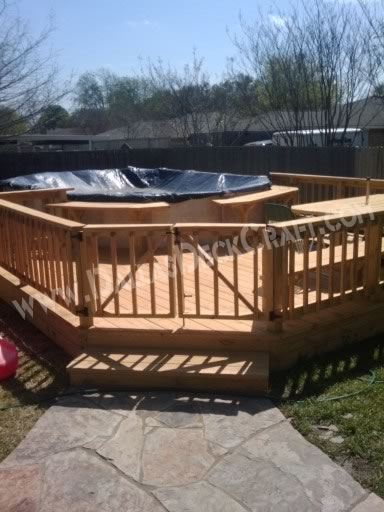
The Things They Don’t Tell You About Building Above Ground Pool Decks
Above ground pool decks do not only allow easier access in and out of the water; they also provide aesthetic improvement to your pool and enough space for outdoor activities to be enjoyed near it. There are several factors that must be considered by any homeowner planning to have a pool deck installed, and this article discusses them in detail.
In the past, above ground pools were just an alternative to the more common in-ground pools. But because of the economic downturn and the rising (often prohibitive) costs involved in constructing in-ground pools—apart from the intensive process—above ground pools have become a more popular choice.
New design concepts are being applied to allow plenty of room to lounge by the poolside, in the form of above ground pool decks, which are decks elevated to match the height of the pool. They can be stand-alone or be connected to the back part of the house.
Above Ground Pool Decking—Three Main Categories
An above ground pool deck can be built in any shape and size, depending on your preferences, budget and how you want to use the deck. There are three main categories to break them down and each of these designs has its own pros and cons. Let’s take a closer look at each one.
Full-Surround Decks
This design surrounds the perimeter of the pool, and is the most popular above ground pool decking choice. These decks are typically circular in shape, and they are strategically constructed so that the inner edge lies close to the pool. This design allows you to enter the pool from any point while hiding its walls.
A full-surround deck also makes cleaning and maintenance easier because you can go around and walk on all sides of the above ground pool. One disadvantage to this type of pool decking, however, is it does not offer ample space for lounging and other activities. This design would also need more supports than the other deck types.
Side Decks
A side deck is built close to the side of the pool but does not surround its perimeter. There are designs that are in rectangular or square shape, however, crescent and round shaped designs are also popular. The size varies, too, from just being big enough for the pool ladder to be anchored, to being large enough to allow lounge chairs, a picnic area and a grill.
Combination
An above ground pool deck can also be designed using both a perimeter deck and a side deck, an option that gives the pool owners the best of both designs. The combination design completely hides the walls of the pool while allowing you to walk around the pool’s edge. There is also an area on one of its side that offers enough space for outdoor activities, lounging, grilling and even a jacuzzi.
This is the best option if you plan to connect your above ground pool deck to your porch or another deck. Take note, though, that the cost of building a deck this way will be much more since you are actually having two decks built. It is always best to consult with your local deck contractors and explain your plans in detail.
Above Ground Pool Deck Materials
One of the most important decisions a homeowner has to make when it comes to building a deck is the material that will be used, primarily because it affects the lifetime of your deck and of course, your budget.
For discerning homeowners looking to add elegance, opulence and natural beauty to their homes, the best choice is wood decking. The richness of the wood provides a rich contrast to the man-made materials used to construct the pool. If you choose the right wood to be used and understand the maintenance and care required for wooden decks, the beauty of your deck will last a long time.
Here are some of the most popular wood deck choices:
Pine—is a classic choice for outdoor decks. It is highly popular among Dallas, Texas builders and homeowners because pressure-treated pine is attractive, easy to use, and relatively low maintenance. It is readily available, so it is less expensive than other wood types.
Balau—an exotic wood known for its durability. It requires little-to-no maintenance. This wood has natural oils that act as water-retardant and keeps the wood from cracking and becoming brittle.
Redwood—this type of wood is great for pool decks because it is very durable and it does not shrink or break even when constantly exposed to dry and wet conditions. It also has natural resins and oils that repels insects, and prevents decay and rot from occurring.
Ipe—this beautiful, dark Brazilian hardwood is harder than nails, so an above ground pool deck built with ipe will surely last decades. It is also fire resistant and has natural oils that make insects hate it. Ipe is considered to be the Ferrari of hardwoods for decking.
Important Things to Remember When Choosing Wooden Decks
Wooden above ground pool decks require a lot of love and care, so you must be prepared maintain them.
They should also be built by a professional deck builder who fully understands deck building, someone who can also guide you through the selection and planning process.
If your home is in Dallas, Texas, for example, you should work with a local professional deck builder like the experts at DallasDeckCraft.com who has more than 30 years of experience in above ground decks. These professionals can get the job done right because they know the weather, the temperature and soil conditions around the area, as these are important factors to consider when choosing the best materials for your pool deck.
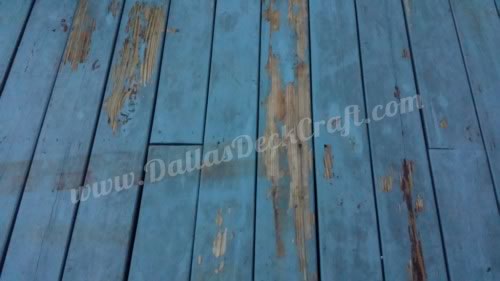
Top 3 Reasons Why You Might Need a Deck Repair—When Can You DIY and When Do You Need an Expert
Deck repair and maintenance are essential in making sure that your deck or porch is kept beautiful and safe. Some of these repair jobs can be DIY, while most require the expert input of a professional deck builder who can properly determine what needs to be done and which tools work best with the materials that will be used.
A deck, in any form, shape or size, needs a lot of tender loving care. Any homeowner who chooses to have a deck in his property has to have a deep understanding of the responsibilities that come with owning a beautiful deck.
And while there are some deck repair projects that you can definitely do on your own, most of these repair jobs—especially those that involve exotic wood—need to be done by a deck contractor or a decking company who knows deck building inside out. But when do you need a professional and when can you do the repairs on your own?
Common Deck Repairs Scenarios
In areas where weather conditions can be extreme, such as in Rockwall, Texas, your deck can be easily and constantly exposed to the elements, resulting to accelerated deterioration of the materials used its constructions. Fortunately, most of these damages can be repaired. Here are some of the most common deck problems and wood deck repair scenarios that you or a deck builder can address.
Reason 1: Deck Refinishing
A beautifully refinished deck not only looks great, it also greatly improves the resale value of any home and extends the lifespan of the wood. Due to normal wear and tear, it is necessary to refinish the deck for better wood protection and to revive the stain color. Deck refinishing is also a great opportunity to address minor deck repairs like missing nails and loose boards.
There are several basic steps involved in deck refinishing:
Step 1: Deck inspection—start by inspecting the entirety of your deck. Check for popped nails, loose boards and wobbly railings. Also be on the lookout for structural component issues such as split or cracked wood, as well as rotten boards. The signs that you would want to look for to know if the wood is rotten are molded, discoloration and softness when the part is pressed with a screwdriver or any hard object. A thorough inspection will allow you to assess the extent of deck repairs that need to be done.
Step 2: Deck Cleaning—your deck needs to be properly prepared before refinishing and this is done by thoroughly cleaning the wood beforehand. There are a few methods to do this, and this step can be labor intensive, which is why deck refinishing is often delegated to a deck contractor. You would need the following tools and materials:
- Goggles or other eye protection
- Gloves
- Stiff bristled brush
- Paint scraper
- Push broom
- Drop cloths
- Commercial cleaner
You can start cleaning the deck by scrubbing the surface with a stiff bristled brush or broom. Although it may not really get into the tight corners and clean the deep cracks like a pressure washer can, scrubbing can be enough if you also use a commercial cleaner or TSP (trisodium phosphate). Many deck repair professionals prefer this deck cleaning method to power washing because it is less harsh.
Step 3: Pressure Washing—this is actually a standard deep deck cleaning method as it effectively removes old stain, dirt and debris from wooden decks. It is important to remember to not let the spray linger on one spot longer than a couple of seconds, as it can gouge the wood.
Step 4: Pre-application Preparations—to prepare the wood surface for finishing or stain, remove loose finishes or paint with a paint scraper. If the surface is painted or varnished and you want to replace it with a stain, you have to strip the varnish with a chemical stripper or the paint off with a paint stripper and a deck cleaner after. If the surface is painted, you have to sand it. Always read the product label and follow the directions for guidance.
Step 5: Applying the Finish—once the deck is dry and totally clean, you can now apply the finish, which usually comes in transparent, semi-transparent, tinted and solid colors. If you hired a deck contractor for the project, make sure that you specify your preferences. There are practical considerations to remember, though: Tinted or clear products usually last for 1 to 2 years, while solid and semi-transparent stains can last up to 4 to 6 years. Rollers, brushes, sprayers, or pads can be used to apply finishing.
Reason 2: Damaged Deck Boards
Just because a few boards are damaged, rotten or cracked does not mean that you have to replace the entire deck. Replacing the damaged boards is a less intrusive, and of course, less expensive form of deck repairs. You can do this wooden deck repair project by yourself if you have any experience, but if special fasteners were used to attach the wood, you would need the help of a professional deck builder.
Board replacement involves unscrewing or un-nailing the fasteners that hold the boards together, then cutting a replacement board that will match the size of the previous one. It will then be re-attached with the same type of fasteners. Once firmly in place, the board has to be sealed and stained again to match the rest of the deck.
Reason 3: Wobbly Decks
Another scenario where a deck needs to be repaired is when it becomes wobbly for various reasons. A wobbly deck poses a real danger to you, your family and your guests as the deck may collapse. Some of the reasons why decks become wobbly are:
- Foundation issues
- Loose connections or fasteners between boards
- The diagonal bracing may be insufficient
- Incorrectly installed posts or the wrong type may have also led to accelerated rotting, which greatly decreased its structural integrity.
Check the entire perimeter of your deck, especially the areas that are close to water sources and within 5 inches of the ground. Search for signs of rot by probing the wood with a screwdriver. You can start by checking the stairs. Pay close attention to the saw-toothed notched pieces supporting the steps called “stringers.”
If you can access the underside of the deck, closely inspect the beams, posts and joists. Double-check the “ledger”—this is a very important frame that attaches the deck to your house. Most collapsed decks are caused by failure of the ledger. It is important to note, though, that not all decks have ledgers. Check all the hardware, especially the joist hangers if they were used. You would need to replace any that are severely rusted.
Topside, make sure to give the railings a good shake and check if any of the posts are damaged or loose. If you find damage, it is best to replace as they will get worse in time. Look for cracks around fasteners and screws, and replace damaged or rusted ones right away.
At the first sign that your deck is unstable, you have to consult a decking company or a deck contractor in your area for an in-depth analysis, deck repair cost estimate and advice on how to go about deck repairs. It is always best to keep your deck in top shape so that you and your family can get the most out of it for a really long time.

The Definitive Guide to Cedar Decking
Cedar decking is a fantastic choice for any homeowner looking for an elegant and durable outdoor addition to their homes. As a decking lumber, cedar is a magnificent wood that lends a strong hint of the Pacific Northwest to residential and commercial exteriors, what with its cinnamon tones that weather gracefully into a rustic silver and its distinct fragrance that can last for decades.
Cedar wood for decks is not only beautiful; it has unique properties that make it highly resistant against rot, decay, insects and harsh elements. It is dimensionally stable, which means that it stays straight and flat after installation. With its consistent grain and density, it is less likely to cup, warp or twist.
Cedar decks are popular because of their unique and warm aesthetic quality, with a wide variety of hues and grain patterns to choose from. Freshly cut cedar boards are very fragrant and often come in different shades of peach, honey and light brown. When allowed to age, cedar wood will slowly turn into a deep silver gray patina.
A Closer Look at Cedar Decking
Cedar trees are an integral part of the forestry and decking industry and have been so for over a century. The trees are principally grown in the forests of the Pacific Northwest. They can grow up to 200 feet tall and diameter of up to 13 feet. They are known to live for a really long time, with one verified to be 1,460 years old.
While Western Red Cedar is the most popular choice, there are other types of cedar wood available. It is best to consult with a professional deck builder to discuss which type of cedar would work best for your deck building needs and budget. Western Red Cedar is known to be more resistant to rot than its Eastern counterparts. It is lightweight and easy to work with, and its heartwood exhibits minimal shrinkage.
Eastern White Cedar, on the other hand, is not as common as red cedar. It is moderately soft and lightweight and like most cedars, it is naturally resistant to insect infestation and rot. The heartwood has a reddish, light brown tinge that turns darker when exposed. It has an ability to hold nails better and finishes rather well.
Another type of ideal for cedar decking is Atlantic Cedar, which has a distinct aromatic odor and a light brown heartwood. It also has a straight grain and fine texture, easily workable with tools, resistant to decay, holds paint well, shrinks minimally and finishes very smoothly.
Advantages of Cedar Wood for Decks
Cedar has properties that are similar to redwood, mainly because they are closely related, however, cedar is tougher and more flexible than redwood. This means that cedar is less brittle and can flex more without shattering unlike redwood. It also has less density and contains less natural oils so it absorbs and accepts stain much easier. There are many benefits to using cedar in deck building. Let’s take a closer look at some of them.
- Costs—cedar decking prices are considerably lower than redwood and other exotic hardwoods. It is even less expensive than composite decking, although the prices may vary from one region to another.
- Highly available and abundant—cedar is available in almost all lumber stores in the country. This tree is abundant in forests and its commercial logging is responsibly managed by the government, so that it is very environment friendly.
- Resilient and reliable—the cedar wood in itself is naturally permeated with particles that make it resistant to moisture, ultraviolet rays, and insect damage. This is why cedar as a species has survived even in moisture-heavy environments.
- Low and easy maintenance—cedar decks are very easy to maintain. Because the wood has low levels of pitch and resin, it can easily absorb stain or finish.
- Natural heat insulation—the surface remains cool even in hot days, so the deck is more foot-friendly
Distinguished, elegant and rich—the color of a red cedar decking is unique, deep and luxurious. When freshly cut, the wood takes on an amber or pinkish hue, but by the time it is ready to be used for the deck, it has turned into a reddish brown cinnamon color. You can choose to retain its natural, elegant color with finishes or stains, or you can let it age to a silver grey color for a more rustic feel.
Cedar decks provide both practical and aesthetic benefits to any property and increases its value as a whole. When building a cedar decking, it is important to work with a professional deck contractor who has extensive experience in working with cedar, this way, you would get only the best.
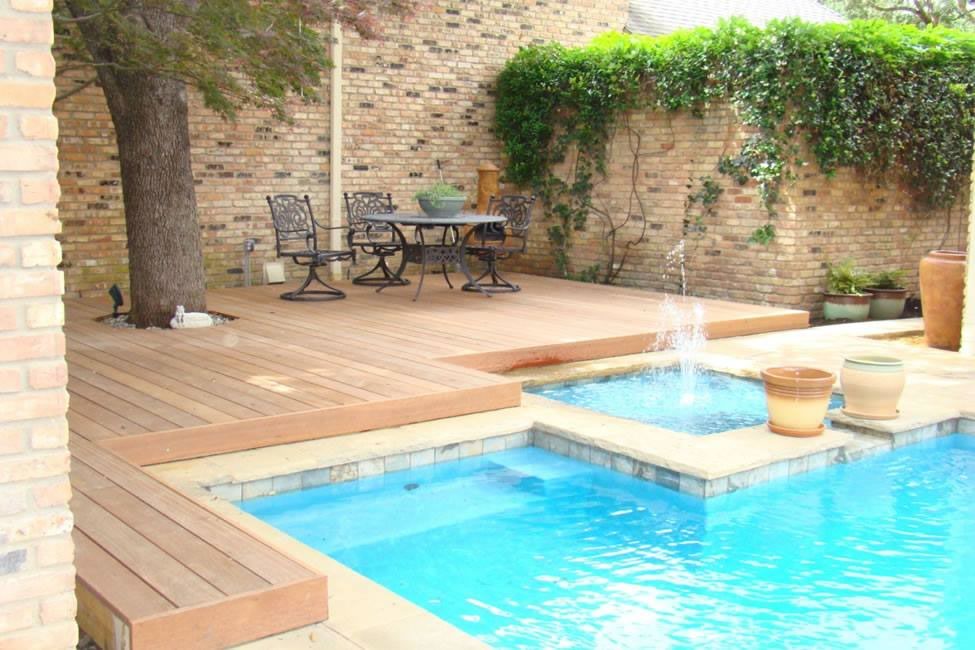
The Definitive Guide to Abaco Decking
The Benefits of Abaco Decking
Abaco decking is rich, beautiful and tough, a tropical hardwood material very popular among professional decking contractors and homeowners. It has been compared to other hardwood superstars like ipe because of its characteristics. It is both dense and very strong, with a natural resistance to rot, abrasion and dent. It has a warm red-brown tone, and a very smooth feel to it. It is ideal for outdoor decking because it can withstand extreme weather conditions.
With all the hype associated with Abaco decking, does it live up to its claims? Should you use it for you next decking project? Let’s take a closer look.
Abaco Decking: A Closer Look
Abaco is a hardwood decking material trademarked by Universal Forest Products which is typically marketed with a 25-year warranty. It is very dense at 60 lbs per cubic feet. Its Janka Hardness Rating is 3,190 lbs which is comparable to ipe’s 3,680 lbs rating. It is available in a European-style finish wherein one side has a smooth surface while the other has milling or ribbing which provides elegance, extra slip resistance and texture.
Abaco decking is also available in traditional and grooved boards. The grooved option has slotted slides that make installation easier using hidden fasteners. These fasteners allow proper spacing, natural contraction and expansion. Abaco is also competitively priced when compared to ipe decking and garapa decking.
Benefits of Using Abaco Decking
As a tropical hardwood, Abaco has the desired hardness and density that makes it ideal for outdoor decks in areas where extreme weather conditions are experienced, such as in Rockwall, Texas. Some of the advantages of using this kind of decking material are the following:
- It is kiln-dried so Abaco offers more stability than its air-dried counterparts
- Supply is reliable from pre-approved mills
- It has a reversible surface. One side has a smooth finish, while the other has an elegant, European-style moulding
- The ribbing or moulding makes the deck cooler in hot weather
- Very durable, hard and strong
- Rot and termite resistant
- Environmentally friendly
- Tight-grained and fine-textured
- The ribbing on the other side relieves stress from the board and helps reduce cupping and twisting
- Without a stain or finishing, the material will weather out to a beautiful silver patina
- Grooved for installation of hidden fasteners
- Can come with matching railing kits
- Has a Class A fire-rating, same as metal, which means it is highly fire-resistant
- FSC certified
- Has a 25-year manufacturer warranty
How to Work with Abaco Decking
Although it can be difficult and challenging to work with a decking material like Abaco because of its hardness and density, a professional deck builder who has years of experience should be able to help you with your deck installation.
It is extremely dense, so special drill bits are required for pre-drilling. High-quality carbide saw blades are also necessary for cutting. Compared to cedar deck installations, Abaco decking installations can take up to three times longer.
It is impossible to hand nail or even use pneumatic nail guns into Abaco, which is why stainless steel fasteners are used. Your choice of fasteners is also important, because you would need your fasteners to last as long as the decking material. The correct type of hidden clips should be used, and it is not recommended to use under-mount bracket systems. Hidden clips also allow for faster installation, and the surface will look cleaner compared to when the product is screwed down.
To get the best out of your Abaco decking, choose to have the fasteners plugged. This process involves countersinking the fasteners deeply from the wood surface and then gluing a plug of the same size into the hole to conceal the fastener. This can be labor-intensive and time consuming, and can only be done by a highly experienced deck builder, but it will be worth it because the finish will turn out to be very beautiful and fluid.
Your home deserves the best, and choosing Abaco decking will not only enhance its beauty, but its value as well. It is strong, beautiful and long-lasting, which is no wonder why builders and discerning homeowners alike put Abaco on top of their list.
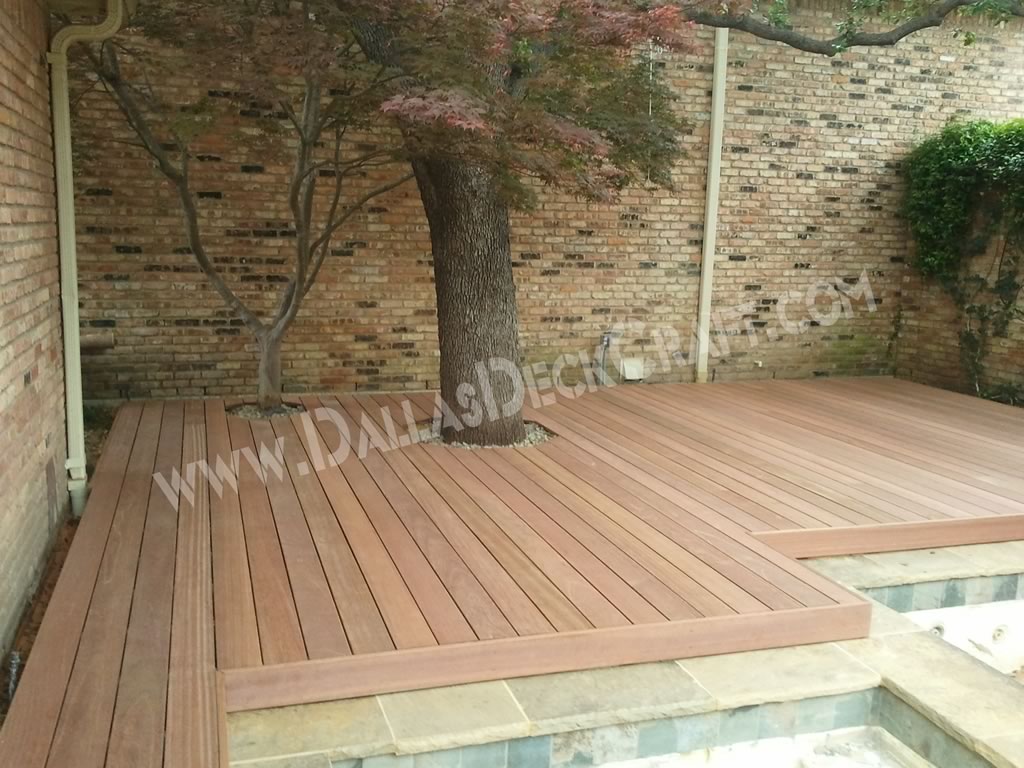
Abaco Decking
Getting to Know Abaco Decking: The Elegant Tropical Hardwood
Abaco Decking – Durable, Beautiful, Long-Lasting and Low Maintenance
Abaco decking is an elegant step up in appearance and durability from pressure treated wood and other decking materials. This contemporary European design includes a natural composition which dissipates heat quickly. This means that your deck is cooler on your feet.
Abaco decking is also slip resistant, and can be connected one board to the next in such a way that your fasteners are hidden. This provides a nice high quality look, while also allowing a design which provides natural contraction and expansion without wear and tear.
Abaco Decking Delivers Multiple Benefits with a Competitive Price Tag
Comparatively, the tropical abaco product is competitively priced. Other hardwoods like ipe require a larger investment than abaco. And that same rich, deep mahogany color that ipe delivers is almost perfectly replicated with abaco.
Price and appearance aside, no matter what you spend you expect a long-lasting, low-to-no-maintenance deck. You also do not want to be replacing and repairing your deck every few years because it has rotted, decayed or been eaten alive from the inside out by bugs and insects.
That is exactly what you get with abaco decking. This hardwood has an amazing natural ability to resist rot. It is impervious to termites and other insects. Decay, twisting, splintering and cracking simply do not occur.
As far as strength and durability goes, abaco is incredibly resilient. Simply put, abaco decking makes for a wonderful, sturdy, safe and beautiful outdoor living experience that lasts for years.
Abaco Decking is Friendly to the Environment
The last few decades, homeowners around the world have become more environmentally conscious. If taking care of the planet is important to you, abaco decking meshes perfectly with your belief system. Since this is an all-natural wood, it never needs to be chemically treated.
That means while you are enjoying your family and friends, creating wonderful lifetime memories on your beautiful abaco deck, you are acting in an environmentally responsible manner as well.
Abaco Decking Delivers an Excellent Fire Rating
And abaco tropical hardwoods are dried in a kiln for exterior use. This special process, combined with the natural qualities of this beautiful, long-lasting hardwood, leaves abaco decking with a better fire rating than cedar and redwood. Virtually maintenance free when compared to pressure treated decking, abaco offers many benefits to you, the homeowner dreaming of creating the perfect outdoor living experience.
DallasDeckCraft.com has been helping satisfied home owners create timeless memories for 35 years. If you live in the Dallas, Texas Metropolitan area, or Collin or Rockwall counties, give us a call today. We can answer any questions you may have about abaco decking, and provide you with an attractive, quote at your convenience. We would love to add you to the long list of happy clients we have created unique, one-of-a-kind outdoor living experiences for, so give us a call today at 214-384-4267 and we can get started on your abaco decking project as soon as possible.
